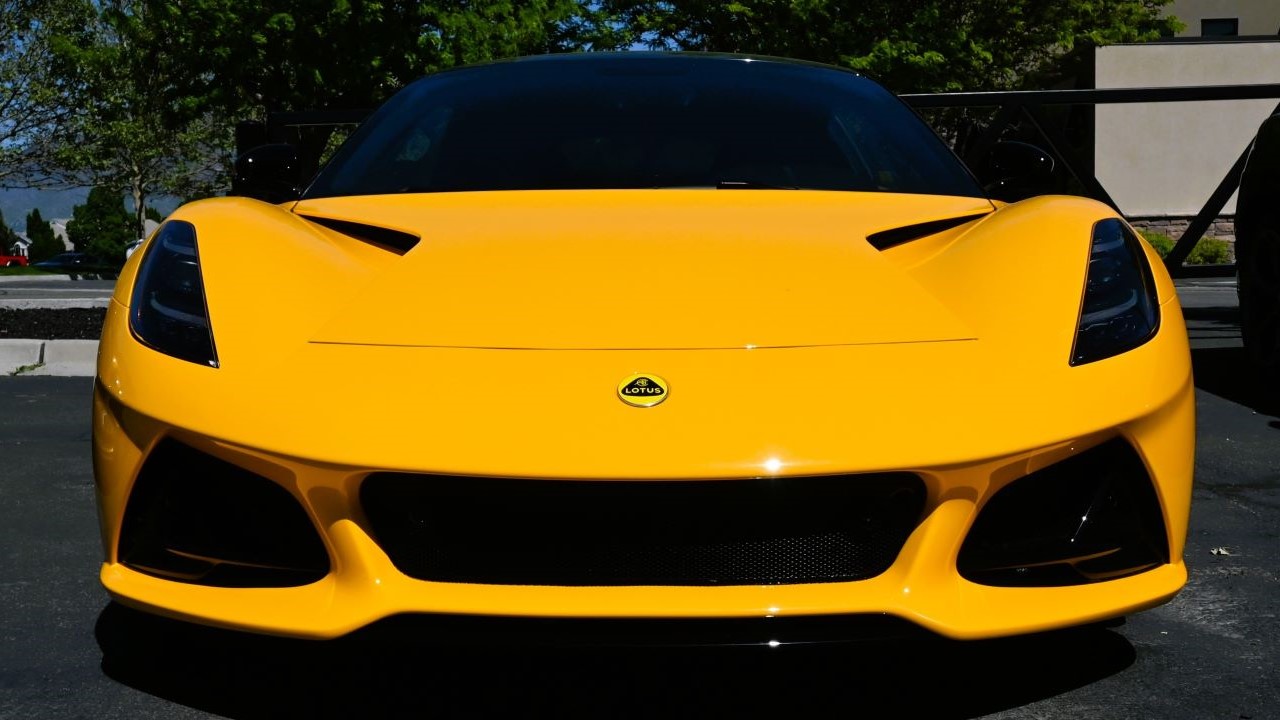I recently got a brief test drive in the Lotus Emira, which Lotus claims is the last internal-combustion powered vehicle they will produce. I also got to test the Lotus Eletre: the electric “hyper SUV” that heralds their future.
So what were my impressions of the last of the old era and the first of the new?

The Lotus Eletre
As SUVs go, this machine is styled beautifully. It’s also roomy, with a luxurious interior. It does weigh three tons, thanks to the heavy batteries common in electric vehicles. When driving it, however, it doesn’t feel that heavy.
This is the first all-electric vehicle I’ve ever driven. So the Salt Lake City Motorcars sales representative had to spend a few minutes explaining how to use the large touchscreen, and a few other controls, to interact with vehicle systems and let it know I was ready to roll.

Once I was moving, the Eletre was smooth, quiet, and oh-so-comfortable. Except for the long charging times common to most electric vehicles, I could get used to road trips in this one.
Still, given my performance-car leanings, luxurious surroundings aren’t my first priority. But I soon found that there’s plenty to celebrate in the performance department as well.
The Eletre R’s 905 horsepower and 726 pound-feet of torque will leave your jaw hanging open, even after your face re-shapes from the instant acceleration. Instead of thinking about passing someone and steadily doing so, you think about it and they’re in your rearview mirror. Like right now! (The base Eletre is less savage, with a mere 603 horsepower, but claims a longer range.)

Similarly, getting up to freeway speed becomes a non-event. I’m used to pushing to 70 or 80 mph pretty fast, but not this fast. When I glanced at the speedometer about halfway up the on-ramp, I was already doing 80, and had to back way off the go pedal.
Any gripes I might have with the Eletre would be similar to complaints I would have with most all-electric cars. Those include relatively long charging times—Lotus claims as fast as 20 minutes to 80% charge—and notably reduced range when accelerating hard, climbing mountains, running the air-conditioning, etc.
As for handling, it’s no Evora or Emira but is still competent in its own right. Steering was comfortable and controlled while accelerating rapidly through a curving on-ramp. I also got to push it through a few roundabouts with pleasing results. It’s definitely not a lightweight—sorry Colin Chapman—but you don’t feel most of its three tons either. This a beautiful, comfortable and, yes, fun vehicle!

The Lotus Emira
Speaking of Emiras, I’ve needed to get my hands on one since they were announced. I fell hard for Lotus after getting some track time in Evora GTs a couple of summers ago. So I can’t help but compare the Emira to the Evora GT now that I’ve finally driven both.
In general, the V-6 version of the First Edition Emira struck me as a more-civilized Evora. If you’ve seen pictures, you know it’s gorgeous. The exterior exudes miniaturized supercar. It also has a more-refined and comfortable interior. Several reviewers have reported that the Emira outclasses the Evora as a daily driver and I have to agree.

The Emira does let you know it’s a performance car the moment you start it. Still, it’s not the same throaty roar that the Evora GT spits out. And while they both share a Toyota V6-based supercharged engine, the Emira strikes me as a bit less vicious when you accelerate. That’s unsurprising given that the current engine has been slightly detuned, for emissions reasons. Specifically, the V-6 Emira’s 400 horsepower and 310 pound-feet of torque are 16 horsepower and 7 pound-feet less than the Evora GT. It’s also about 37 pounds heavier.
I should acknowledge that I had just driven the Eletre R. After its insane levels of torque, most vehicles feel like they lack something in the acceleration department.

As for handling, the steering is amazing and I couldn’t tell the difference between the Emira and the Evora GT. I didn’t get to experience the Emira on-track. However, I did find a quiet road with multiple roundabouts. The Emira charged through them precisely and flawlessly, and I wasn’t holding back on lateral G’s.
The clutch and manual transmission were fine, if perhaps a bit stiff. But they didn’t occupy much of my attention after the first minute or two.

The Emira comes with a touring or sport suspension, with many reviewers recommending the touring option for driving comfort with little loss of handling. The car I drove was equipped with the sport suspension, and the firmness just didn’t bother me at all. Take that with a grain of salt though. I’m used to feeling every crack and seam in the road through my WRX STi and my autocross/track mod’d Miata.
Overall, the Emira is an incredibly fun and beautiful machine that’s still on my short list for a relatively-affordable canyon runner and occasional track car. If you’re considering something along those lines, and around the $100K price point, it’s definitely worth a closer look.

The Future of Lotus
Similarly, if you’re interested in all-electric luxury performance, check out the Eletre. According to the Lotus Eletre configurator website, the base Eletre starts at $107K and the high-performance Eletre R at $145K.
So Lotus is moving toward a heavier and all-electric future. Still, the Eletre, the Emeya “hyper GT” sedan, and the Evija hypercar, promise that it will be a high-performance future.
© 2024, R Bairett
Note: As reported last year in https://utahmotornews.com/finally-a-lotus-dealer-in-utah/, Salt Lake City Motorcars is now an official Lotus dealer.










0 Comments